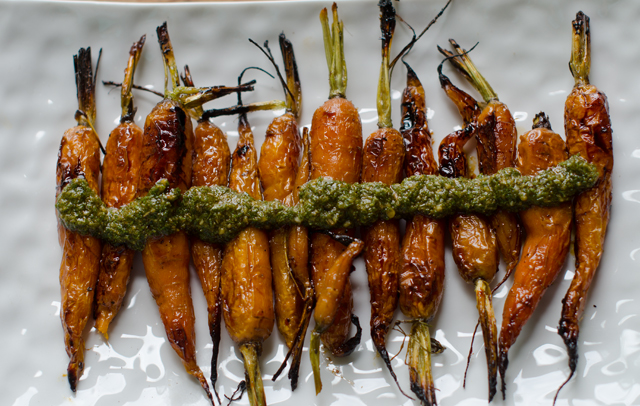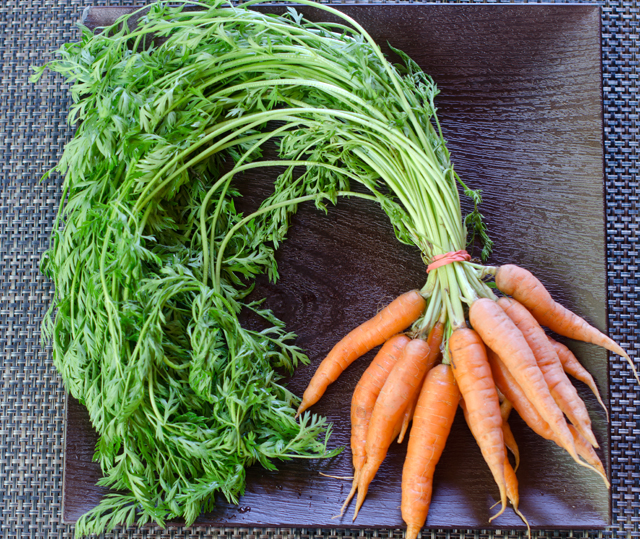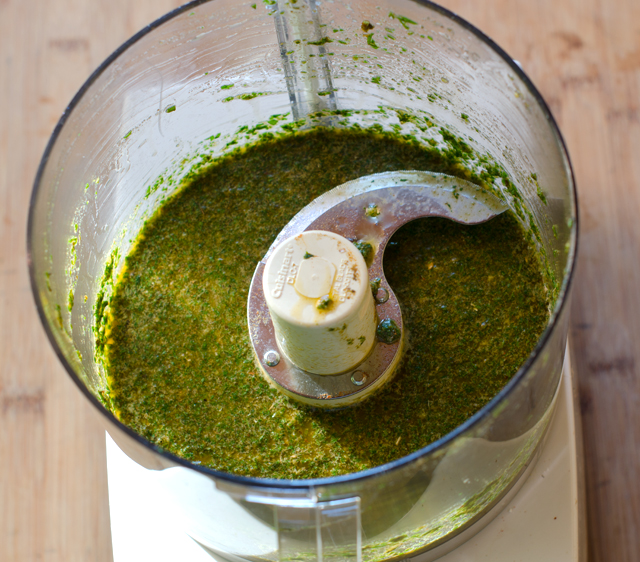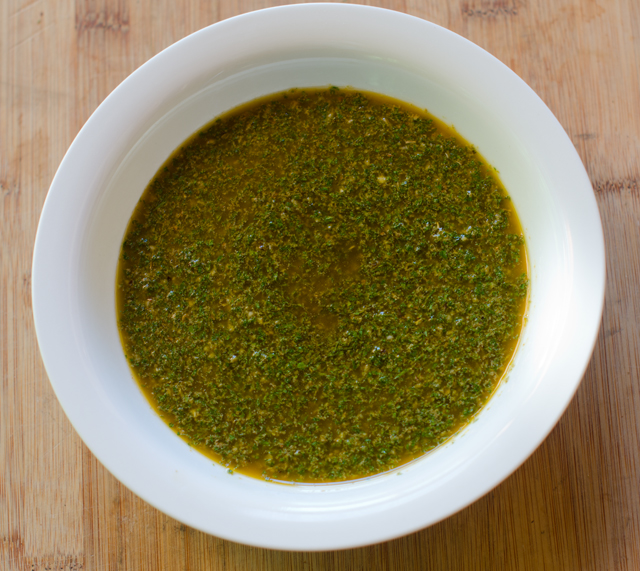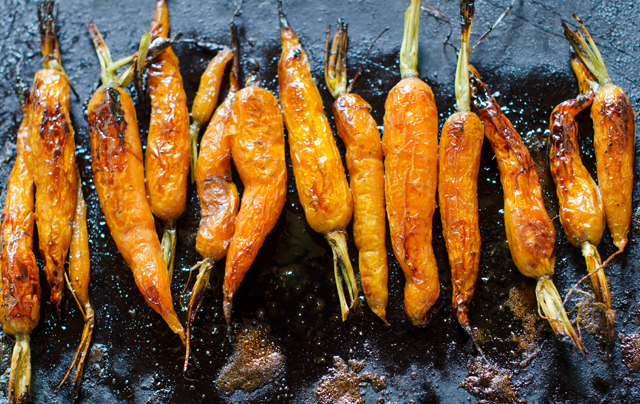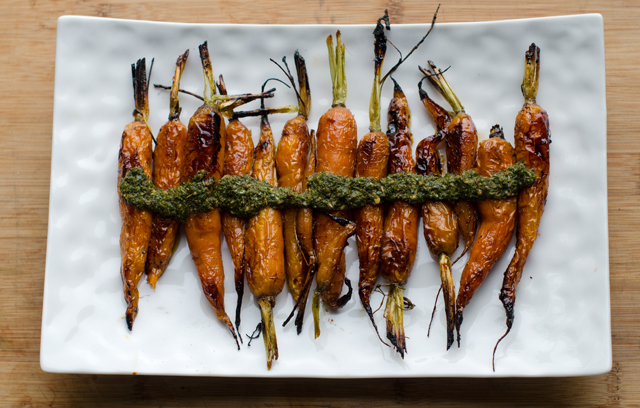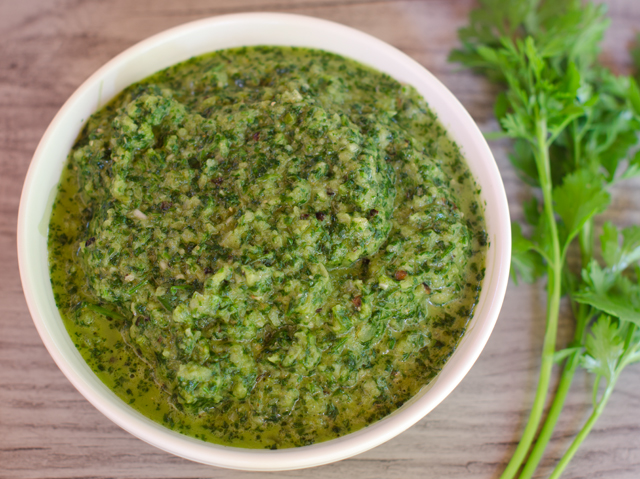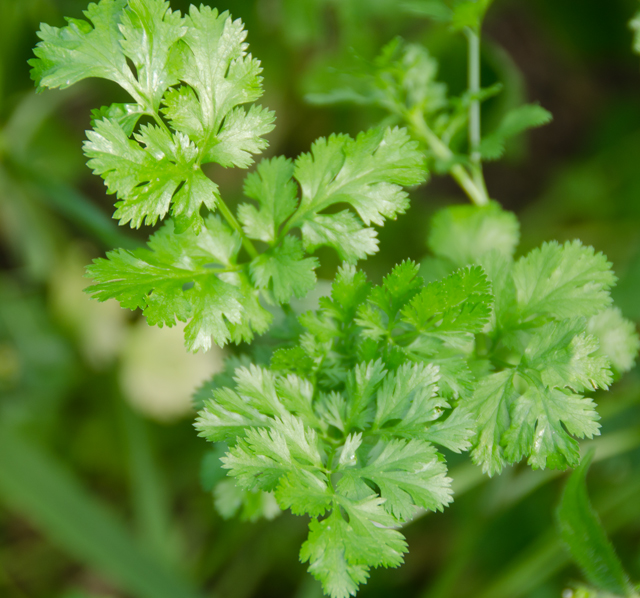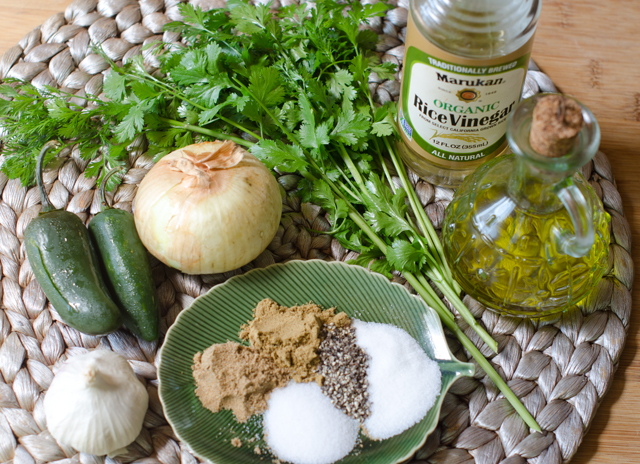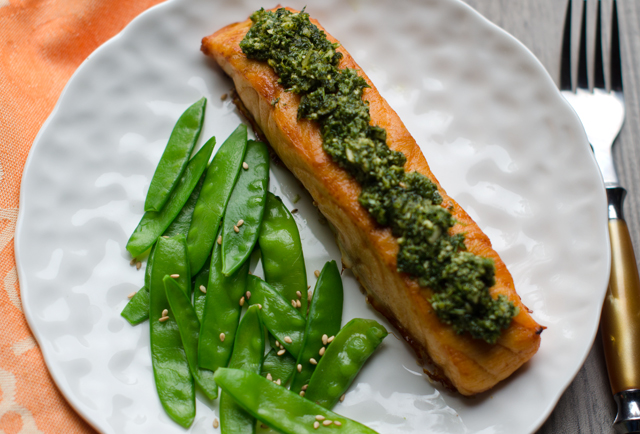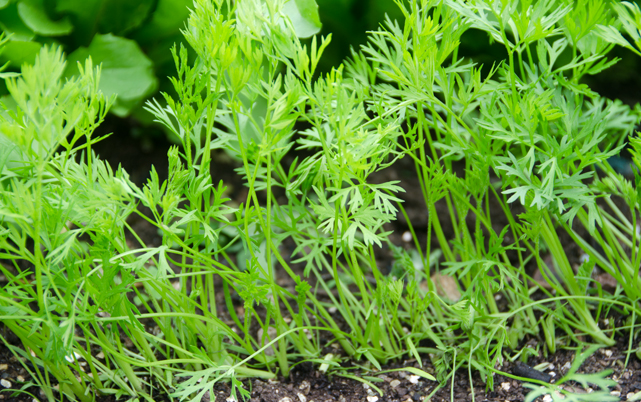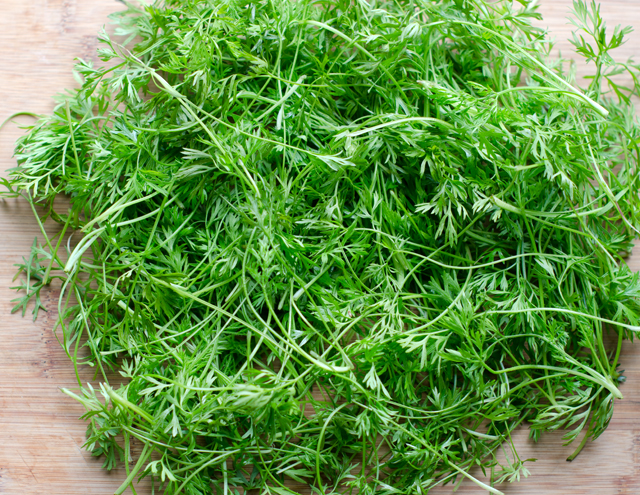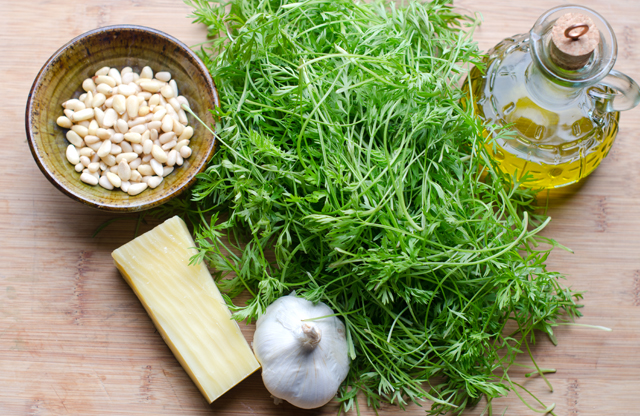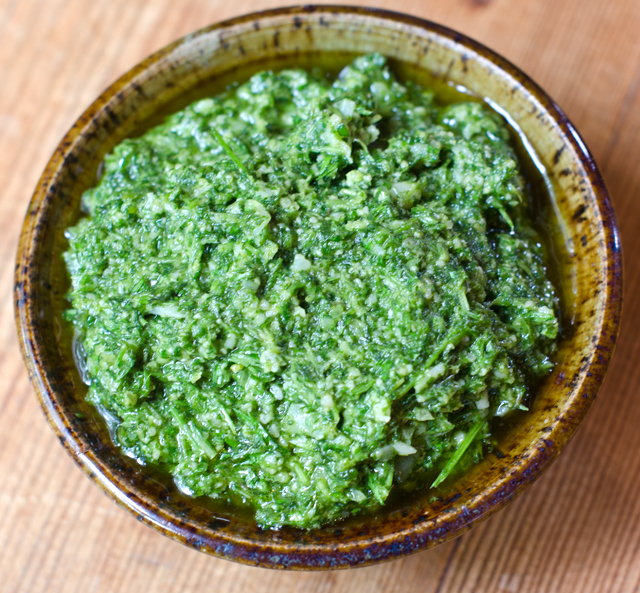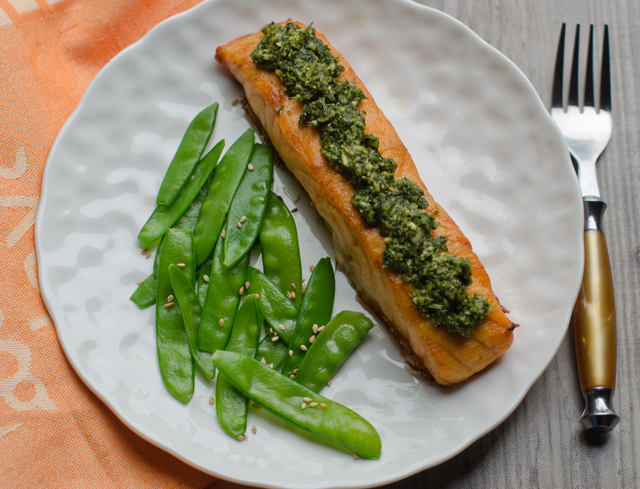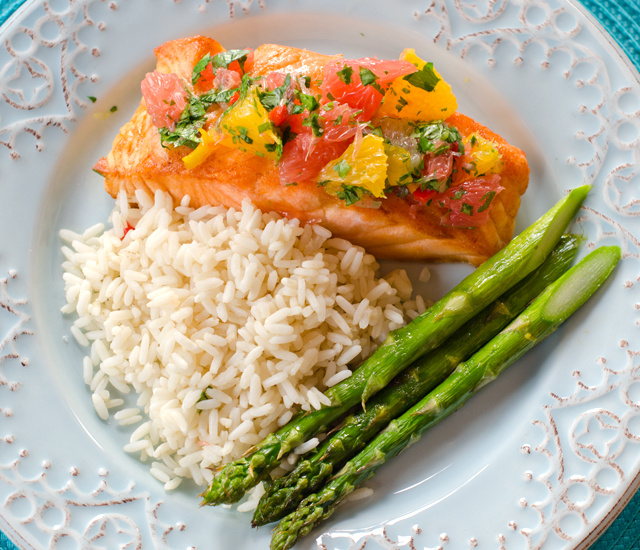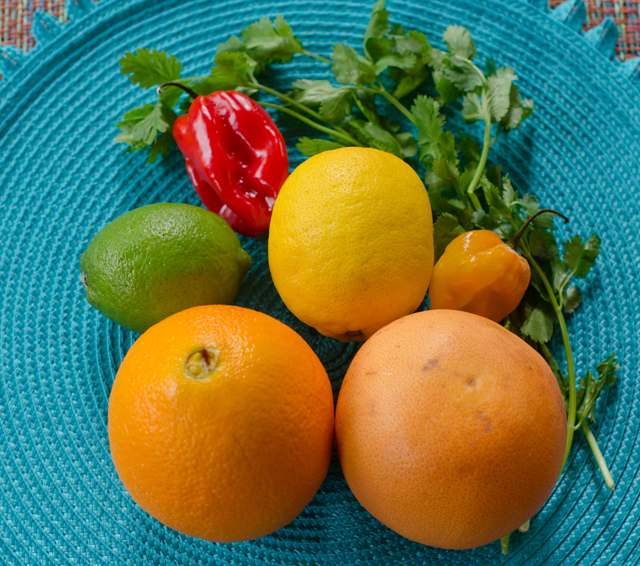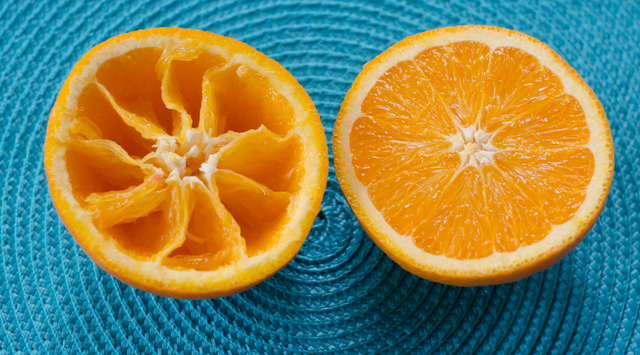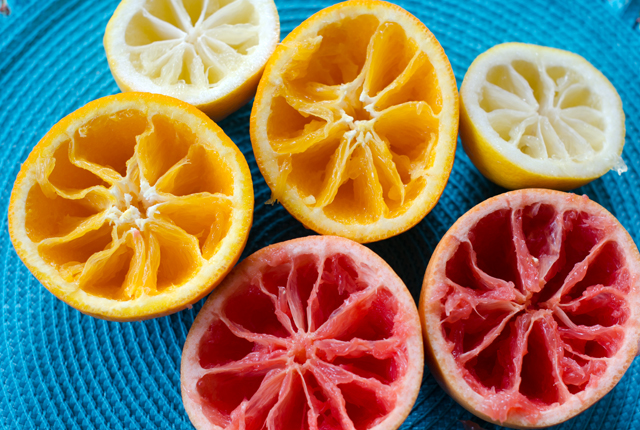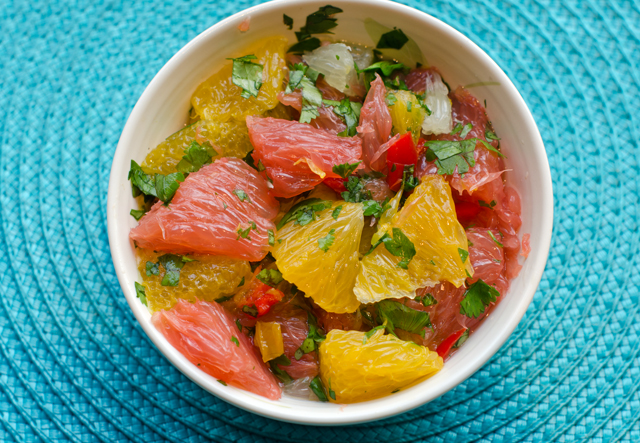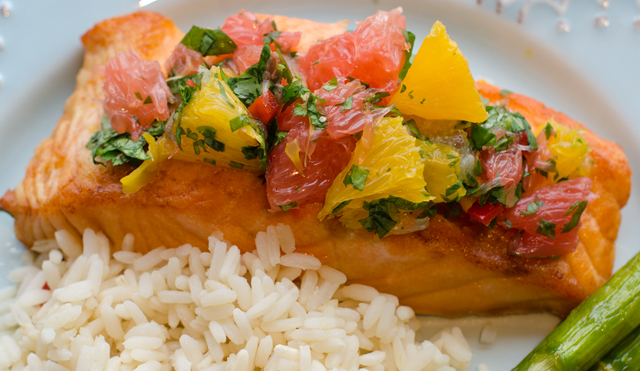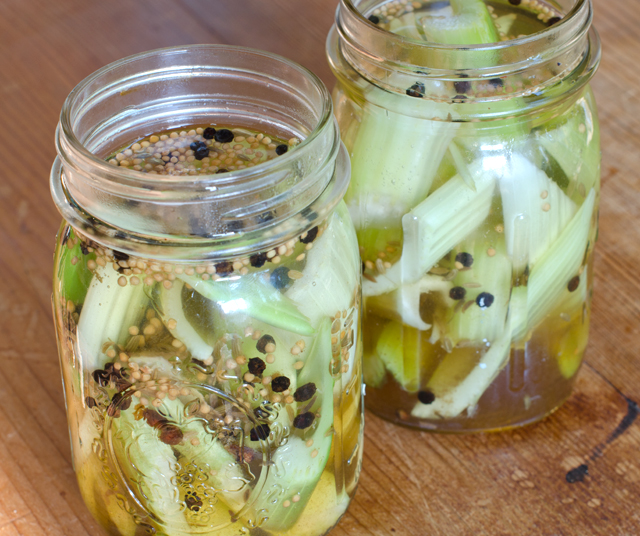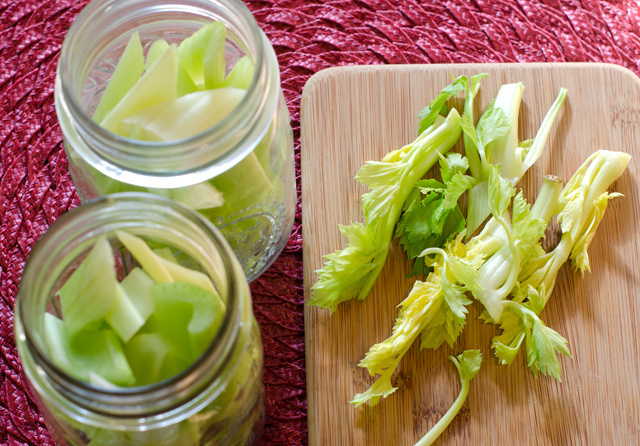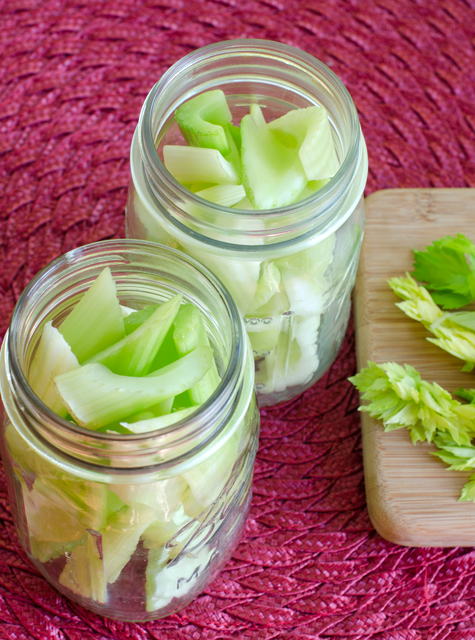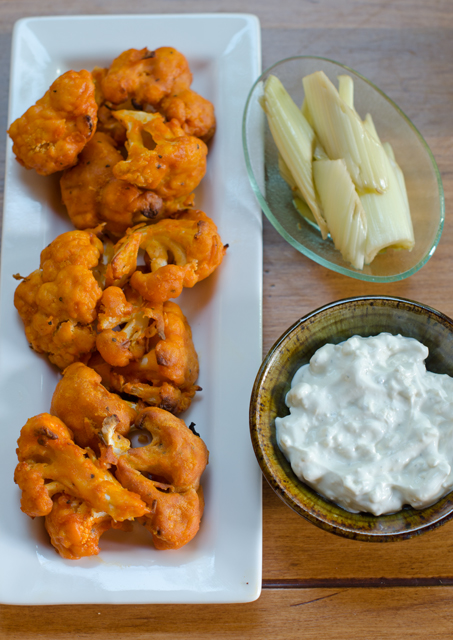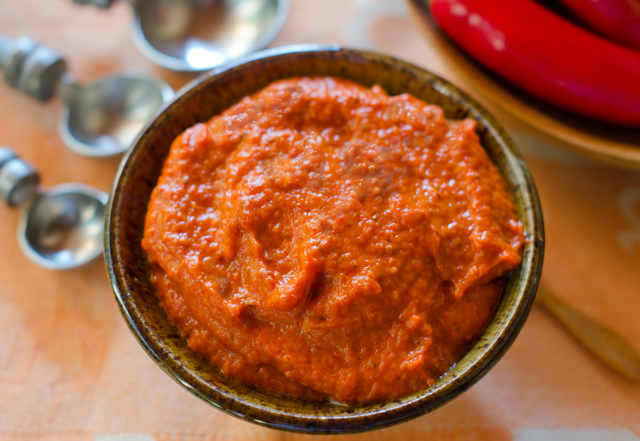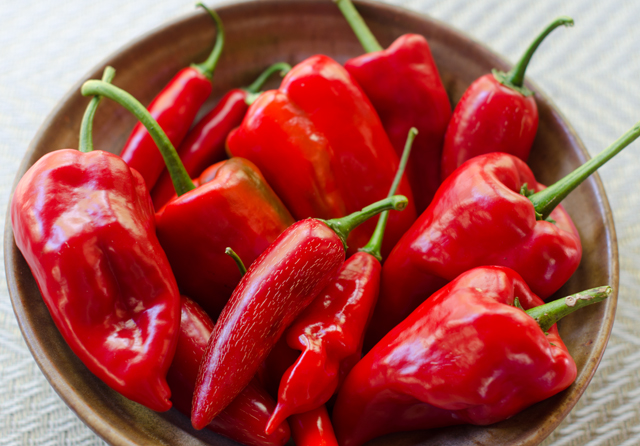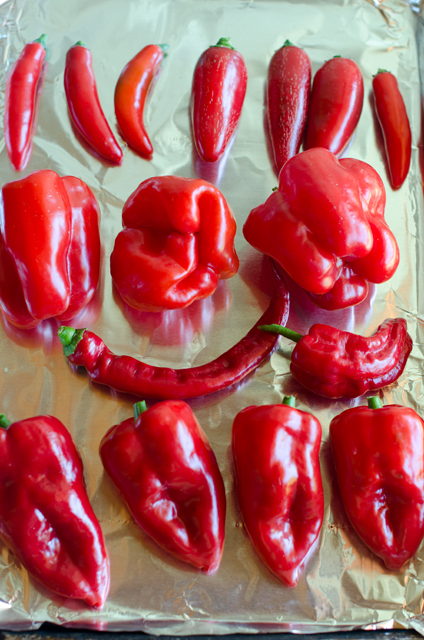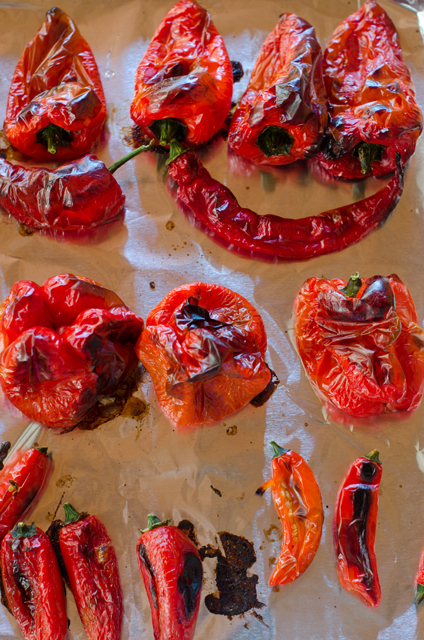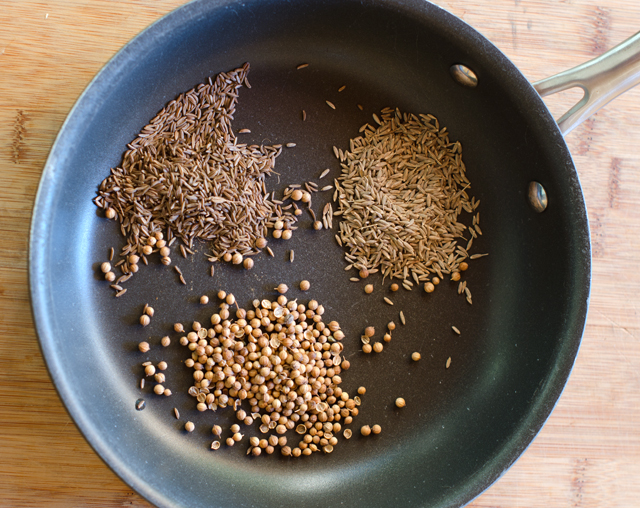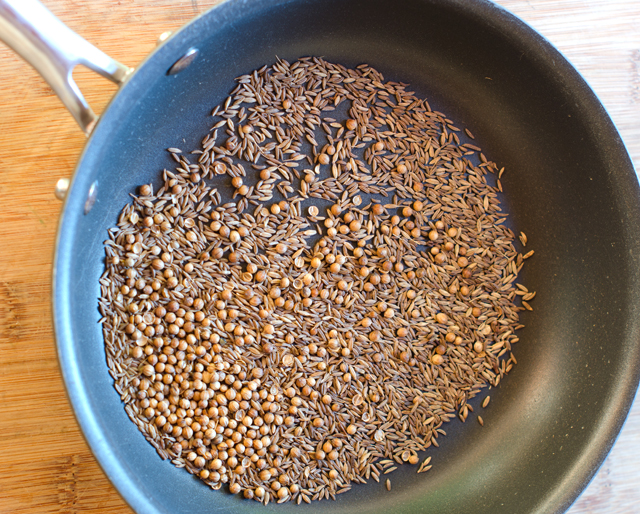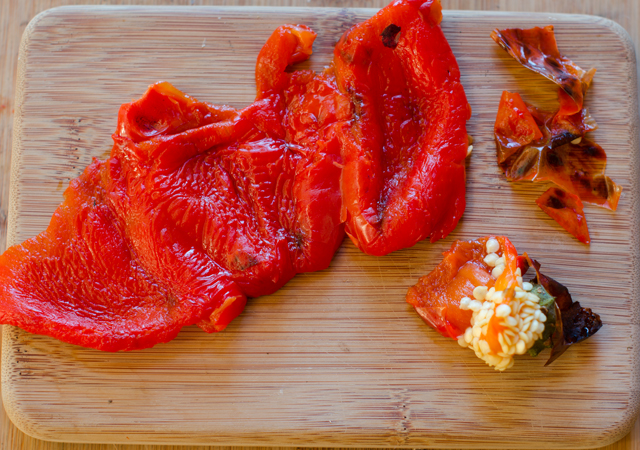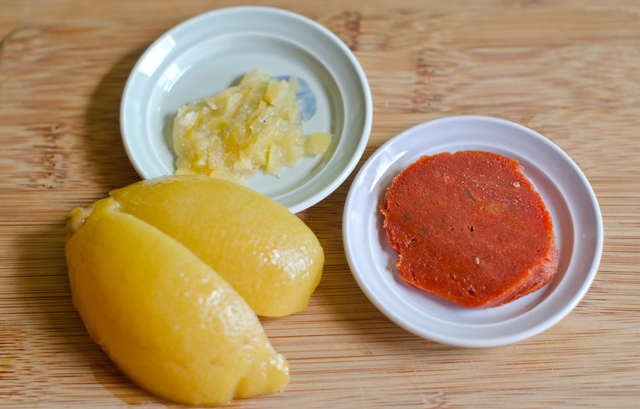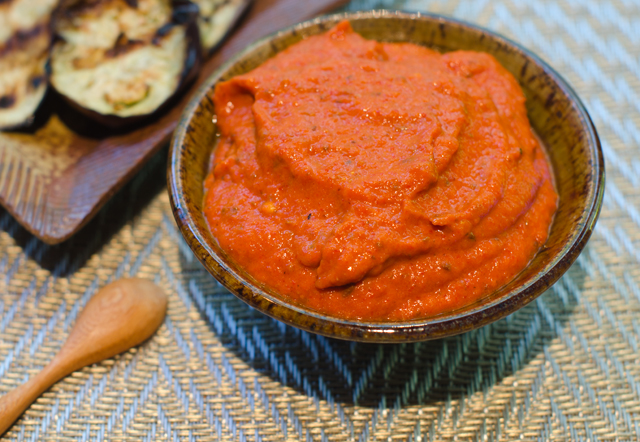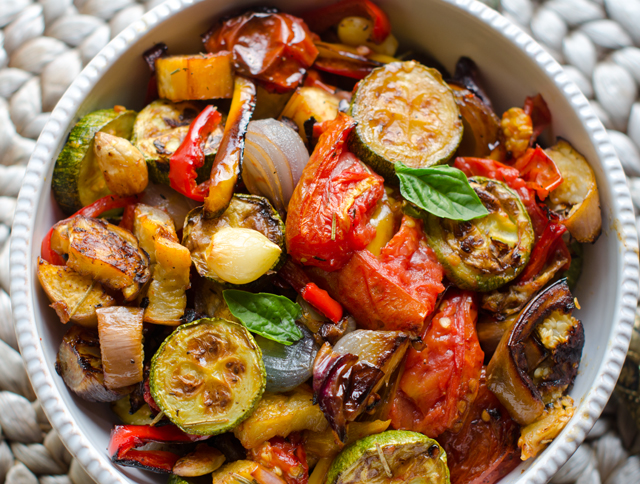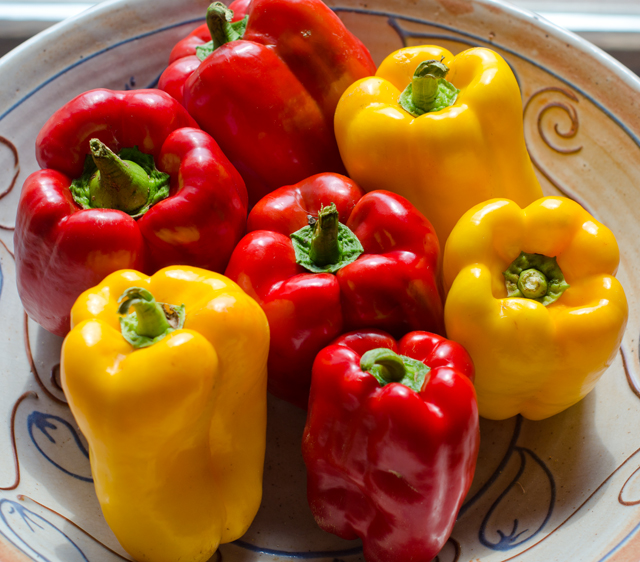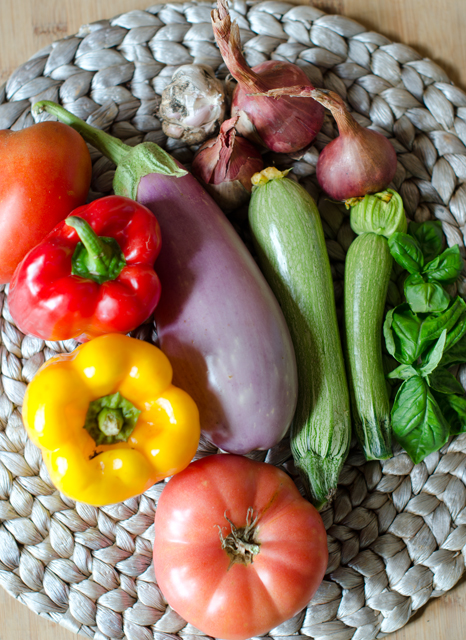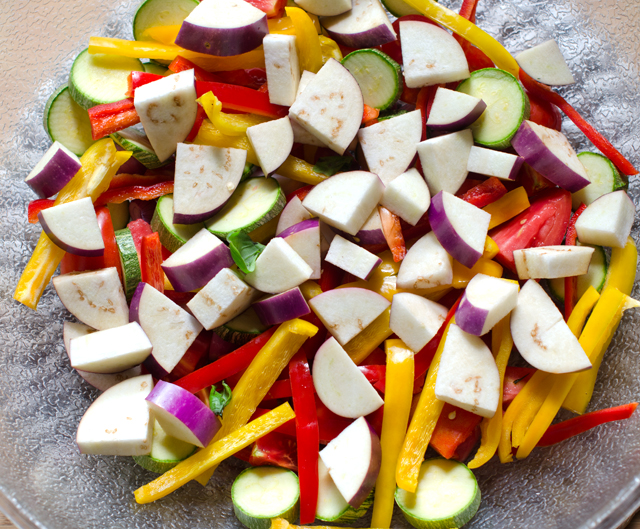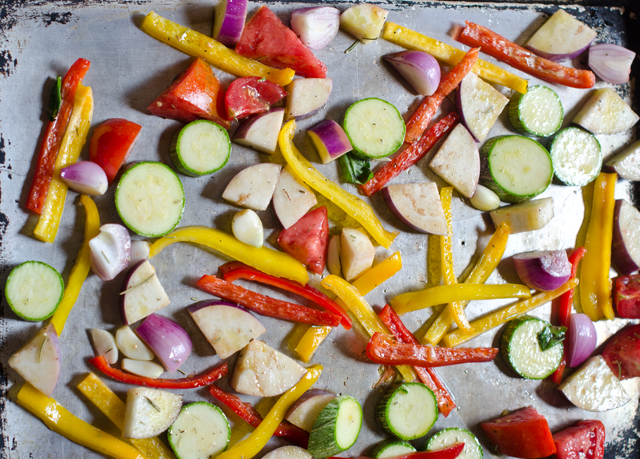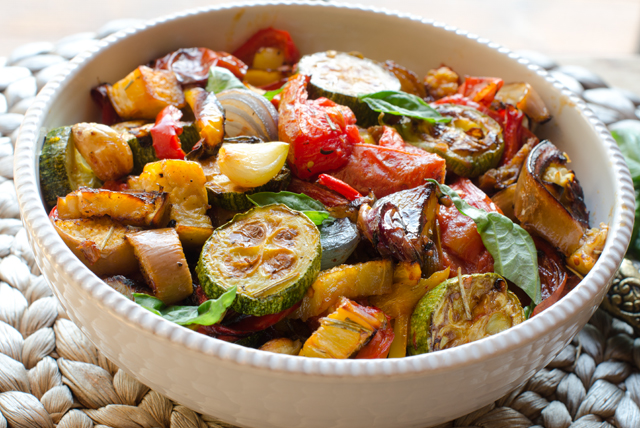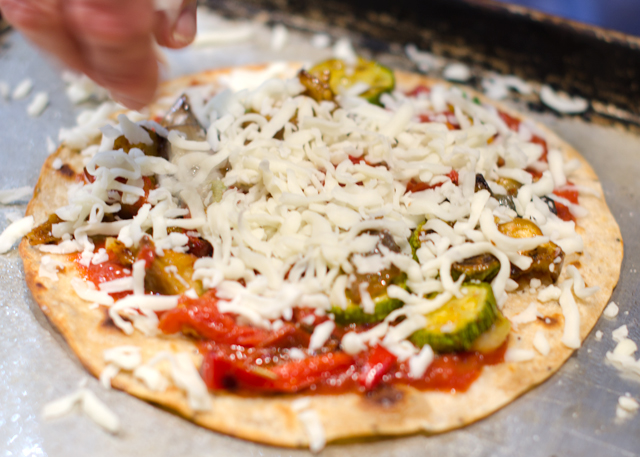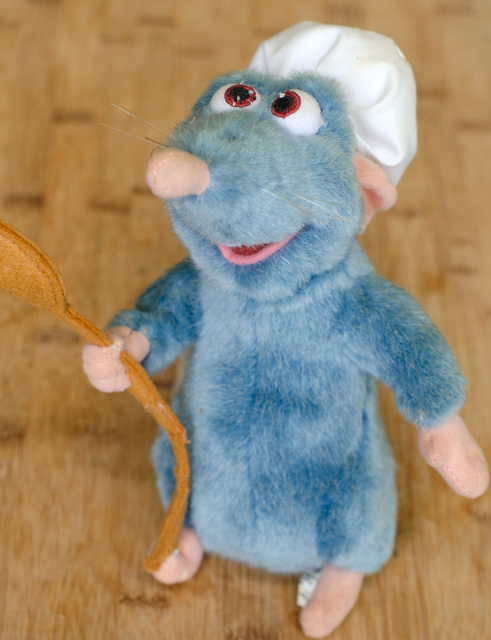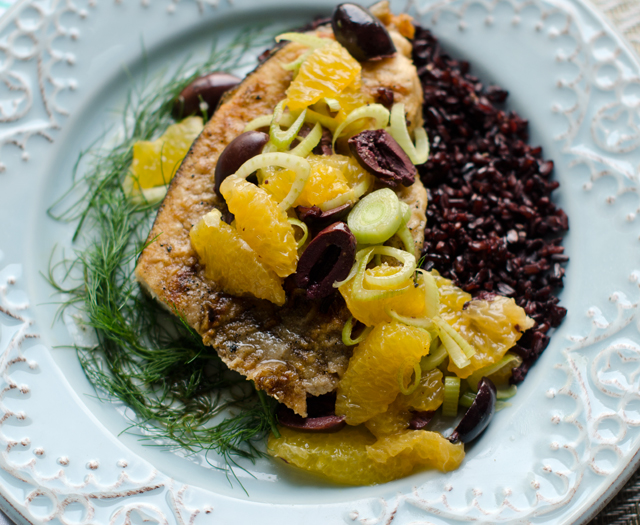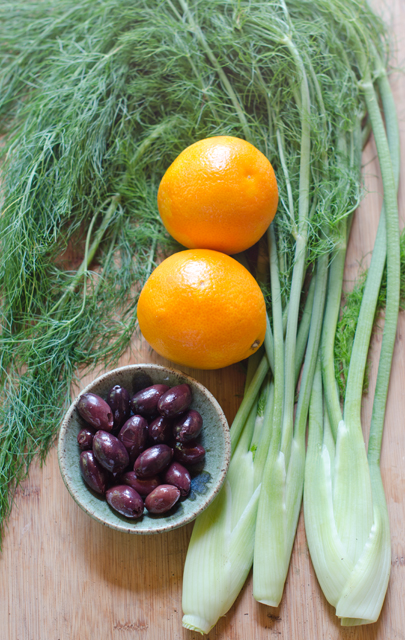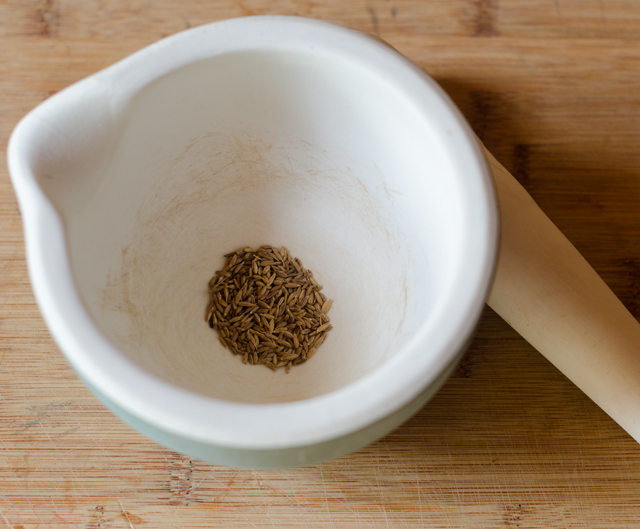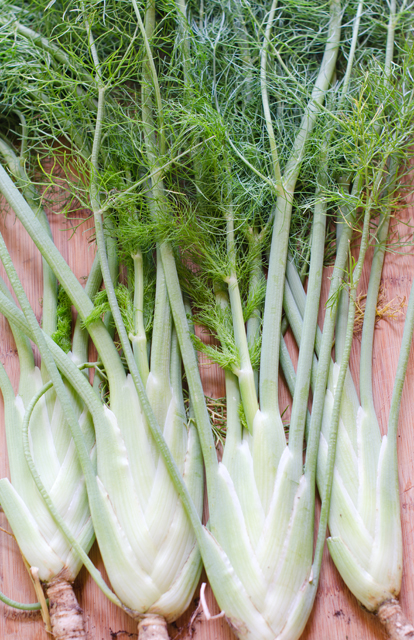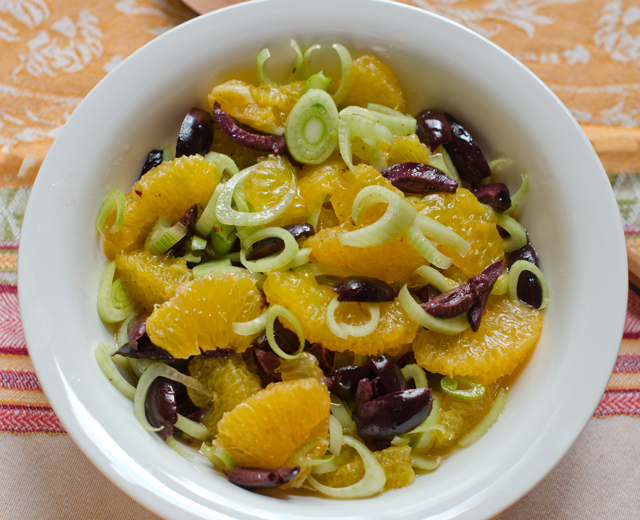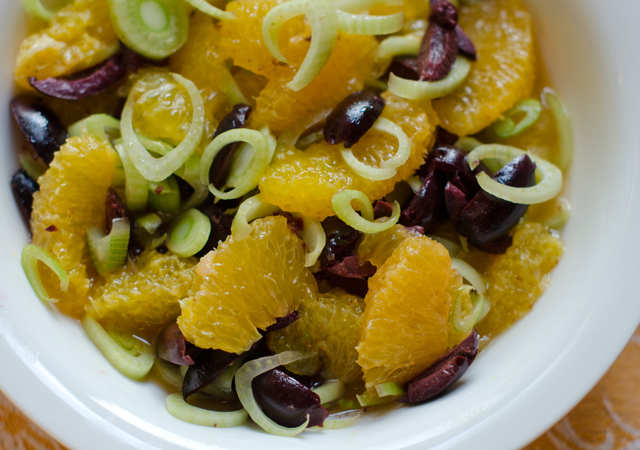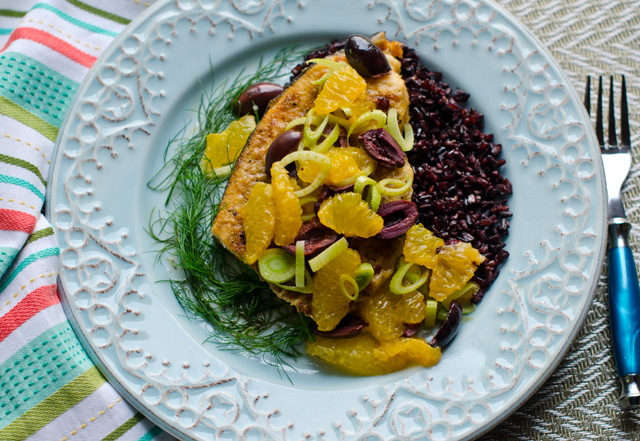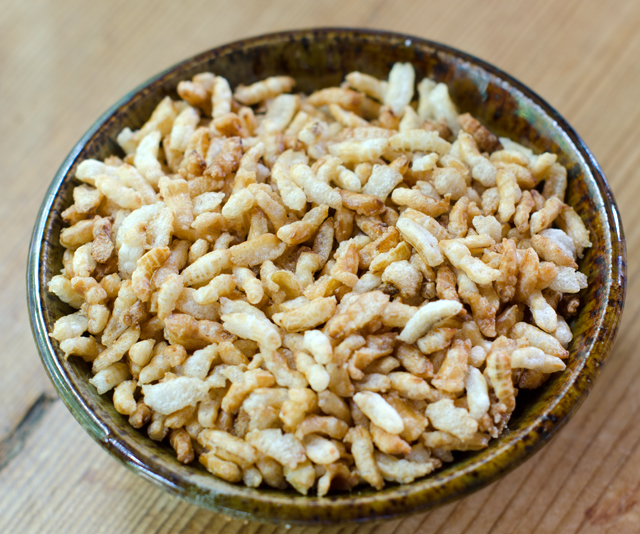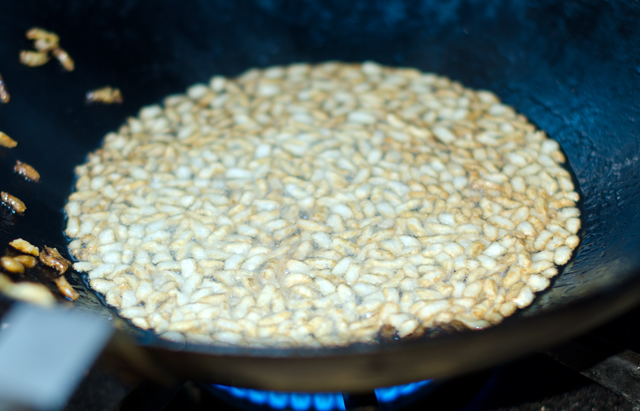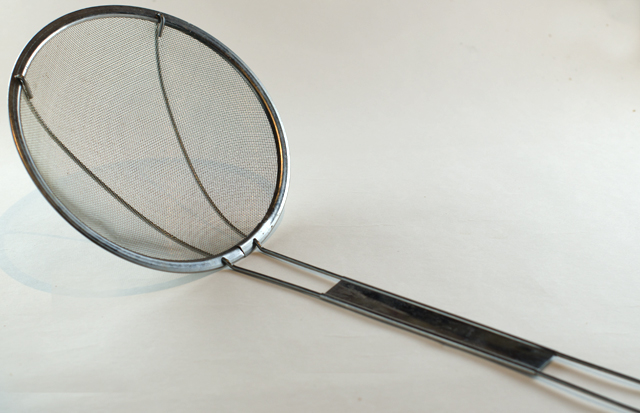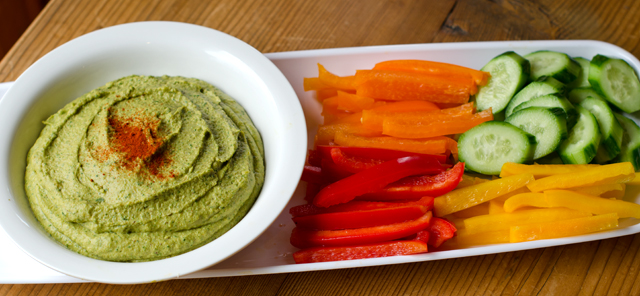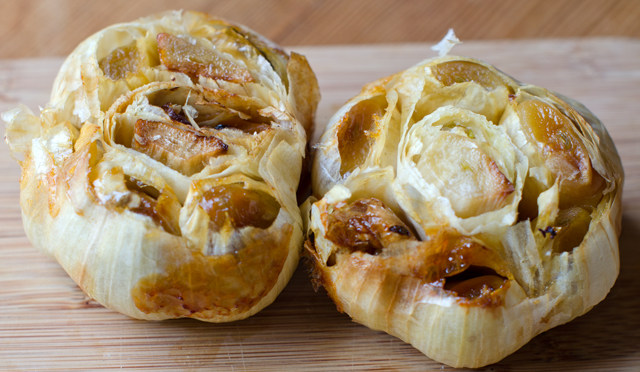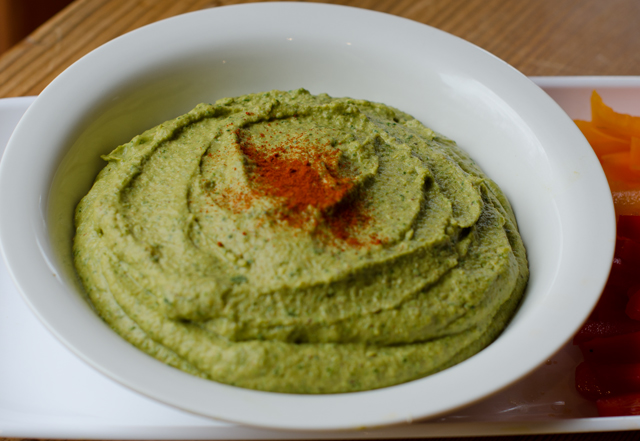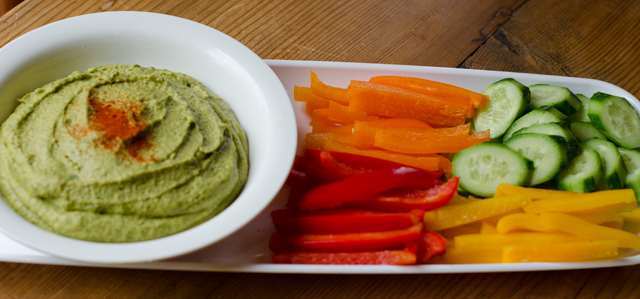When I exercise on our elliptical machine I catch up on my version of “must-see t.v.”. Right now I am watching the current season of Iron Chef America. For those not familiar with the show, two chefs, a world-class “Iron Chef” competes against an up and coming chef. The chefs create a menu in one hour from appetizer to dessert that prominently features that week’s secret ingredient. Two weeks ago it was ” Battle Kobe Beef”. This weekend I tuned into “Battle Carrot”. The show is fun to watch and also stimulates my own creativity in the kitchen. I’m pretty sure when I went to the farmers market after my workout I had carrots on the brain. So along with all the other goodies I found, a lovely bunch of recently harvested carrots went into my bag.
My plan was to roast the carrots and in the spirit of “root to stem” cooking, use the greens as well. Carrot tops are edible and rich in vitamins A,C, calcium, iron and dietary fiber. They have an earthy, herbal, slightly bitter taste. Carrot top pesto was a success last year, this time I was looking for something a little bit different. Chimichurri sauce was a natural for this dish. This rich herby sauce from Argentina was already a favorite of ours. I have served as an appetizer at parties, spooned over rare beef tenderloin on crostini. It was easy enough to swap out the parsley in the original recipe for carrot tops. After all they are both members of the same plant family, along with fennel, dill and coriander.
Wash the greens well and pat dry with paper towels. The most time-consuming part of this recipe is separating the leaves from the slightly harder stems. Aim for a lightly packed cup, if you want this thicker to use as a dip, either cut back on the olive oil or add a quarter cup more of leaves. Blend all of the ingredients until smooth in a food processor. Taste and adjust the seasonings. Give the chimichurri at least an hour to fully combine the flavors, over night is even better. If you don’t have carrot tops, substitute the traditional parsley or a combination of parsley and cilantro.
I served my chimichurri over roasted carrots. Traditionally this is served with steak but I think it would be just as good as a sauce with grilled chicken or lamb chops. Store in the refrigerator in an airtight container for up to a week.
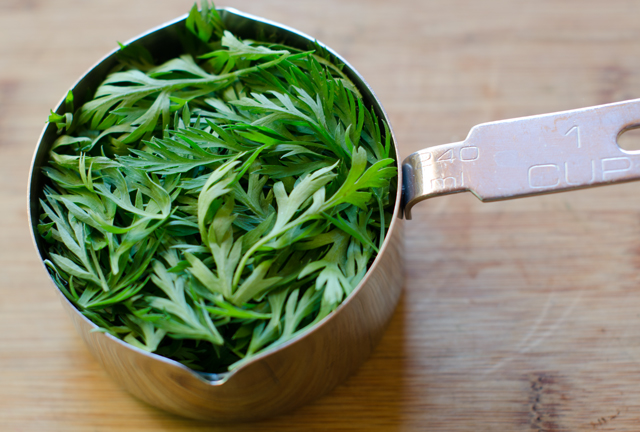
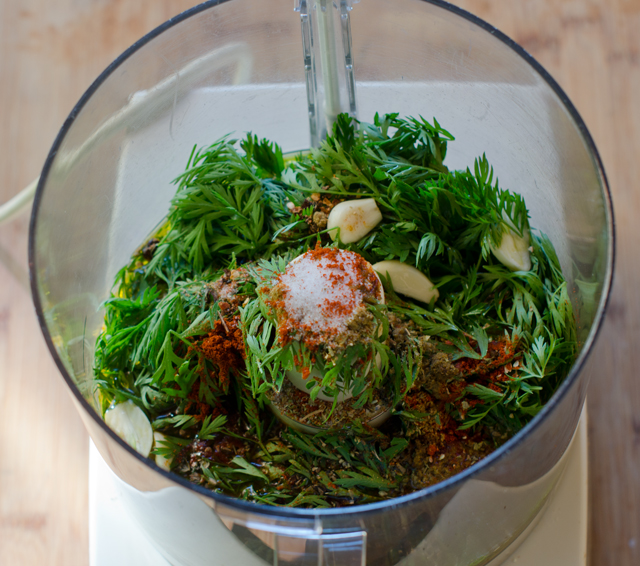
Carrot Top Chimichurri Sauce with Roasted Carrots
Makes about a cup
Ingredients for Chimichurri Sauce
- 1 c lightly packed fresh carrot top leaves
- ¾ c extra virgin olive oil
- 3 T red wine vinegar
- 1 T dried oregano
- 2 t ground cumin
- 1 t salt
- 3 cloves garlic, peeled and roughly chopped
- ½ t smoked paprika
- ½ t dried crushed red pepper
Directions
- Combine all of the ingredients in a food processor and blend until smooth.
- Refrigerate for at least one hour but tastes even better the next day. Store in an airtight container. Use within a week.
Roasted Carrots
Ingredients
- 1 lb fresh carrots, scrubbed well, tops reserved for chimichurri sauce
- 1 T extra virgin olive oil
- 1 T honey
- Kosher salt and freshly ground black pepper
Directions
- Preheat oven to 425°F. Coat a large baking sheet with non stick spray.
- In a bowl large enough to accommodate the carrots, mix together the olive oil and honey.
- Add the carrots to the bowl and toss them with the oil and honey. Salt and pepper to taste.
- Spread carrots evenly on the baking sheet and use a spatula to scrape the rest of the honey-oil mixture over the carrots.
- Roast carrots for about 15 minutes, shaking pan halfway through the cooking process for even browning.
- Remove carrots from oven, allow to cool slightly. Serve carrots topped with chimichurri sauce.
